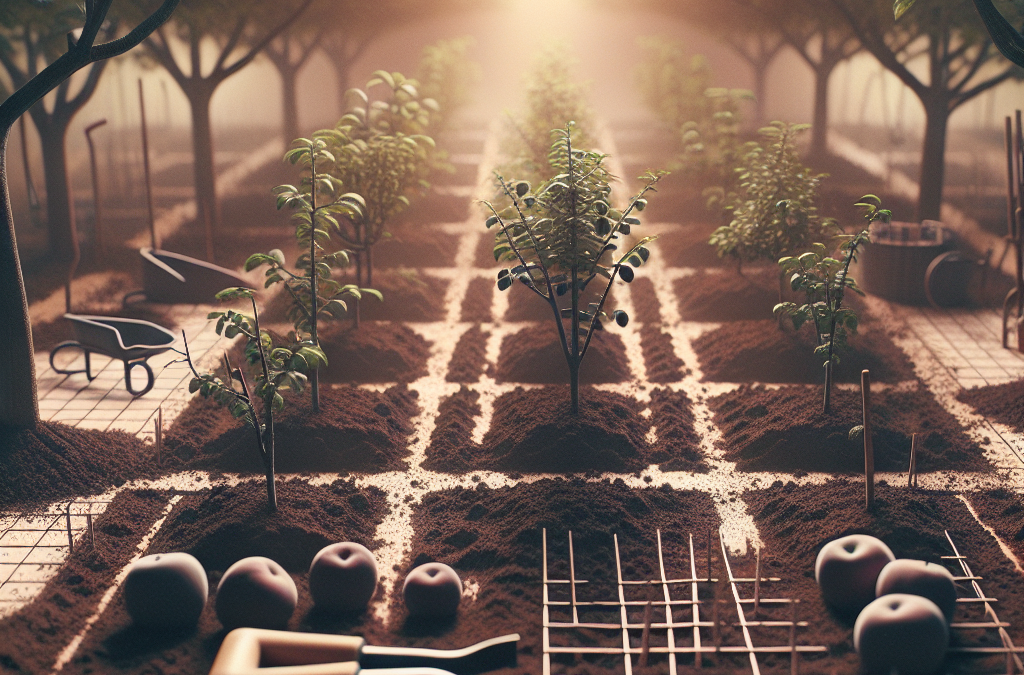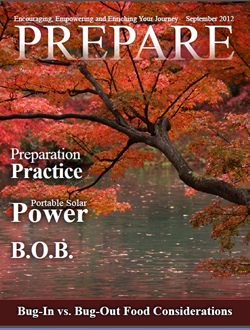Choosing the Right Location
Assessing Sunlight and Drainage
When I first decided to start my backyard orchard, one of the first things I did was scout out the perfect location. Sunlight is key for fruit trees, and I found that a spot with at least 6-8 hours of direct sunlight is ideal. Check where the sunniest spots are in your yard through the day—you’ll want to avoid shady areas, especially from nearby buildings or trees.
Drainage is another important factor. You don’t want your trees drowning during heavy rain, as roots can rot. A quick way to check drainage is by digging a small hole and filling it with water. If it drains within a few hours, you’re on the right track!
Keep in mind that different types of fruit trees may have specific needs regarding sunlight and soil. Researching the needs of what you want to plant will set you up for success. I found doing a bit of homework made all the difference in my orchard’s health!
Space Considerations
Now, let’s talk about space. Trees need room to grow, so figuring out the layout is crucial. When you’re checking out your yard, measure the distance between various trees. Most fruit trees need about 15-20 feet apart. Trust me, you don’t want to be snipping branches later!
Think about accessibility to get to the trees for maintenance, pruning, and eventually harvesting your delicious fruits. If you want to enjoy the harvest with family and friends, keeping some walking space around the trees makes it a more pleasant experience.
Also, consider the size each tree will grow to when fully mature. Some varieties can get pretty hefty, and overcrowding can lead to problems with pests and diseases.
Microclimates
If you’ve got hilly terrain or distinct environments within your yard, you might have microclimates to consider. I honestly didn’t know this until I started planting and noticed my southern slope was warmer, so I planted my peach and fig trees there.
Different microclimates can dramatically affect how your trees perform. Some areas might be consistently warmer or cooler than others, impacting growth and fruit production. Pay attention to how wind and temperature variations play out over the seasons.
Once you’re aware of those microclimates, you can strategically plant different tree varieties accordingly. It’s kind of like giving each tree a special little home within your yard, which helps in the long run!
Selecting Fruit Trees
Choosing the Right Varieties
There’s something so satisfying about picking out your trees! I recommend starting with varieties that you know you’ll enjoy. Do some research and see which types thrive in your region. Local nurseries are a great resource, and you can even ask for recommendations for beginner-friendly options.
Consider the climate and soil conditions while choosing. For instance, certain types of apples are super adaptable, while peaches might require specific conditions. You’re building a little ecosystem here, so make choices that complement each other!
Also, think about the time it takes for each variety to produce fruit. Some might bear fruit in a couple of years, while others take much longer. Balancing quick gratification with a little patience can be part of the fun!
Pollination Needs
Another thing to keep in mind is pollination. Some trees need a buddy to help them produce fruit, while others are self-pollinators. I learned this the hard way when I planted two trees that needed partners but didn’t check ahead of time!
If you’re planting fruit trees that require cross-pollination, make sure to plant compatible varieties nearby. Check pollination charts or guides specific to your chosen varieties to see what pairs well together.
It’s like matchmaking for your trees! A little planning here ensures a bountiful harvest down the line without any awkward fruitless years.
Age and Health of Trees
When selecting your trees, the age and health of the plant matter too! I prefer younger trees since they tend to adapt better to their new home in my yard. However, older trees might produce fruit sooner but require more care in terms of disease and maintenance.
Inspect each tree for signs of bugs, disease, or damage. A healthy tree will have vibrant leaves and strong branches. Trust me, skip the ones that look sad and droopy—no one wants to take that headache home!
Finding a reputable nursery is key. Look for places that guarantee their trees and are willing to offer care tips. They’ll help you on your journey and ensure you’re set up for success right from the start.
Planting Your Trees
Preparing the Soil
Alright, the fun part is here—planting your trees! But first, you need to prep the soil like a pro. Start by clearing out any weeds in the area. Poor soil can really affect growth, so I always take the time to amend it if necessary with compost or other organic materials.
Dig a hole that’s about twice the size of the root ball of your tree, which helps the roots establish properly. The last thing you want is your trees feeling cramped in their new home.
Pull out any rocks or debris while you’re at it. You want that tree to have the best shot at thriving. I like to add a bit of fertilizer or organic matter right into the hole to give the tree a little boost as it settles in!
Watering and Mulching
After planting, watering is crucial. I usually give my trees a deep soak to ensure the water reaches the roots. It’s important to follow up regularly, especially in the first year as the trees are getting used to their new home.
Mulching around the base can help retain moisture and regulate soil temperature. Plus, it keeps weeds at bay. I typically use wood chips or straw—just make sure not to pile it against the trunk.
Check your trees regularly. A little drip here or there can go a long way to avoiding stress in your new plants. Trust me, it’s way easier than fixing problems down the line!
First-Year Care
Your trees need a little extra attention during their first year. I make it a point to keep an eye on pests, and learning what the common ones are in my region has helped me tremendously. Natural remedies work wonders without disrupting the ecosystem.
Pruning in the first year is another game-changer. I was a bit intimidated to prune my young trees initially, but doing a little light trimming really promotes healthy growth. You want to shape them nicely and ensure good airflow to prevent issues.
Finally, don’t forget to give them a little love and care. Sometimes I just sit outside and admire my little orchard. Connecting with your trees really makes a difference—after all, they’re gonna be feeding you soon!
Maintaining Your Orchard
Regular Pruning
Once your trees are established, regular pruning is essential for keeping them healthy. I generally prune in late winter or early spring before new growth starts. Getting comfortable with pruning opened up a whole new world for me—it’s like giving my trees a fresh haircut!
Pruning helps shape the tree and allows for better sunlight and airflow. It’s also the best way to control the size and encourage more fruit production. Keep an eye on weak or crossing branches; making those cuts will help prevent issues later.
And, you don’t need to fear making mistakes—just be consistent. After a couple of years, you’ll find your groove and learn what works best for your individual trees.
Pest and Disease Management
Managing pests and diseases is a must-have skill in your orchard arsenal. I’ve found that planting companion plants around your trees helps deter certain pests naturally. It’s quite fascinating to see which plants work best together!
When I notice pests, I tend to use organic solutions—things like neem oil or insecticidal soaps. They’re less harmful to beneficial insects, which helps keep my ecosystem in harmony.
Also, keeping a close eye on your trees for any signs of disease will save you a lot of headaches. Early detection is key! If you notice yellowing leaves or unusual growths, research or consult with a local expert.
Understanding Harvesting Times
Finally, after all that care, comes the best part—harvesting! Understanding when to pick your fruit is crucial. Each variety will have its signs, but generally, a good rule of thumb is that ripe fruit tends to be full-colored and slightly soft to the touch.
Remember to handle the fruit gently as you pick it. I’ve found that a little twist and lift method works best for stone fruits—like peaches and plums—to avoid bruising.
And enjoy it! There’s nothing quite like the taste of a fruit you’ve nurtured yourself. Sharing your bounty with friends and family makes it all the more rewarding!
Conclusion
Starting a backyard orchard has been one of the most fulfilling projects I have ever taken on. From choosing the right location to maintaining your trees year after year, each step of the process is packed with lessons and rewards. Get ready to embark on a delicious journey, and happy planting!
FAQ
1. What are the best fruit trees for beginners?
Some of the best fruit trees for beginners include apple, pear, and cherry trees. They are generally hardy and adaptable, making them easier to grow.
2. How often should I water my newly planted fruit trees?
In the first year, water your newly planted trees deeply about once a week, adjusting for rain. Make sure to keep the soil moist but not soggy.
3. When is the best time to prune fruit trees?
The best time to prune most fruit trees is during late winter or early spring, just before new growth starts. This helps promote healthy growth for the coming season.
4. Do I need multiple trees for pollination?
It depends on the variety! Some trees are self-pollinating, while others require a partner tree nearby to produce fruit. Researching your chosen varieties will help you determine their needs.
5. How long until my fruit trees start producing fruit?
It varies by species, but generally, most fruit trees will start producing fruit within 3 to 5 years. Patience is key, but the wait is definitely worth it!





